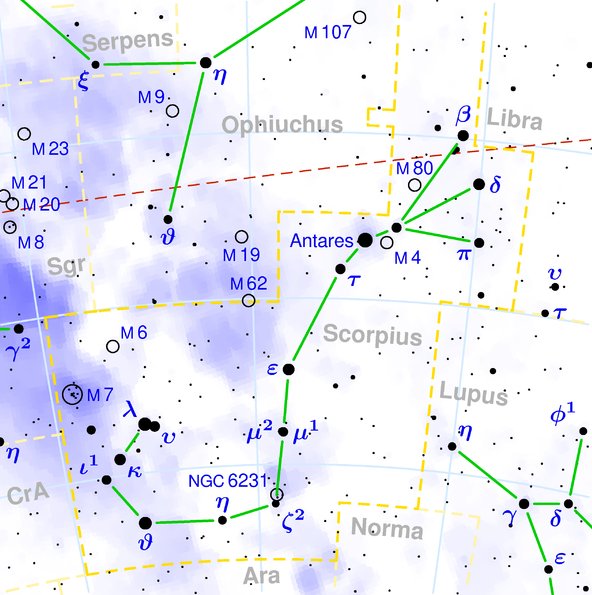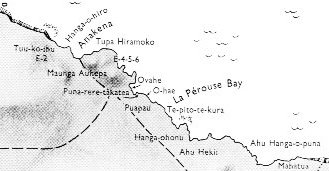5. At the opposite side of the sky, at the other equinox, was the Scorpion:
... Once upon a time the 'tail' (the end) of northern summer came at the Scorpion, an animal with a curved tail ending at a sharp point (tara) - which probably motivated how the design of the glyph for Antares was made to resemble that for Aldebaran although with a curved tail ...
The distance from Aldebaran (α Tauri) to Antares (α Scorpii) was not precisely 365.25 / 2 = 183 days but 181 days:
The curved tail of the glyph at Antares illustrated how this star represented the whole constellation, because the rule was to let α in any constellation stand for the whole (pars pro toto).
The curve was an ancient sign meaning the end. As such it was used for instance in Manuscript E when the kuhane (dream soul) of the sleeping Hau Maka found a place for the King to reside: ... The dream soul came to Rangi Meamea and looked around searchingly. The dream soul spoke: 'Here at last is level land where the king can live.' She named the place Rangi Meamea A Hau Maka O Hiva. The mountain she named Peke Tau O Hiti A Hau Maka O Hiva. The dream soul moved along a curve from Peke Tau O Hiti to the mountain Hau Epa, which she named Maunga Hau Epa A Hau Maka O Hiva.
The dream soul went to the other side of the mountain Hau Epa. As soon as the dream soul looked around, she saw the sand (beach), which was very white and light. She remained there and explored everything. After she had looked around carefully, the dream soul of Hau Maka said, 'Ah! This is the place that will serve as a residence for the king. She named the place Oromanga A Hau Maka O Hiva and also named the neighboring bay Hanga Moria One A Hau Maka O Hiva ... Later the Explorers (planets) followed the directions given by the dream soul and for them the journey went across the sea (in the sky) from Hiva to end with a sweeping curve of their canoe:
Sweeping was also used by those who were preparing for the return: ... When it was evident that the years lay ready to burst into life, everyone took hold of them, so that once more would start forth - once again - another (period of) fifty-two years. Then (the two cycles) might proceed to reach one hundred and four [104] years. It was called One Age when twice they had made the round, when twice the times of binding the years had come together. Behold what was done when the years were bound - when was reached the time when they were to draw the new fire, when now its count was accomplished. First they put out fires everywhere in the country round. And the statues, hewn in either wood or stone, kept in each man's home and regarded as gods, were all cast into the water. Also (were) these (cast away) - the pestles and the (three) hearth stones (upon which the cooking pots rested); and everywhere there was much sweeping - there was sweeping very clear. Rubbish was thrown out; none lay in any of the houses ...
|
||||||||||||||||||||||||||||||||||||||||||||||||||||||||||||||||||||||||||||||||||||||||||||||||||||||||||||||||||||||||||||||











